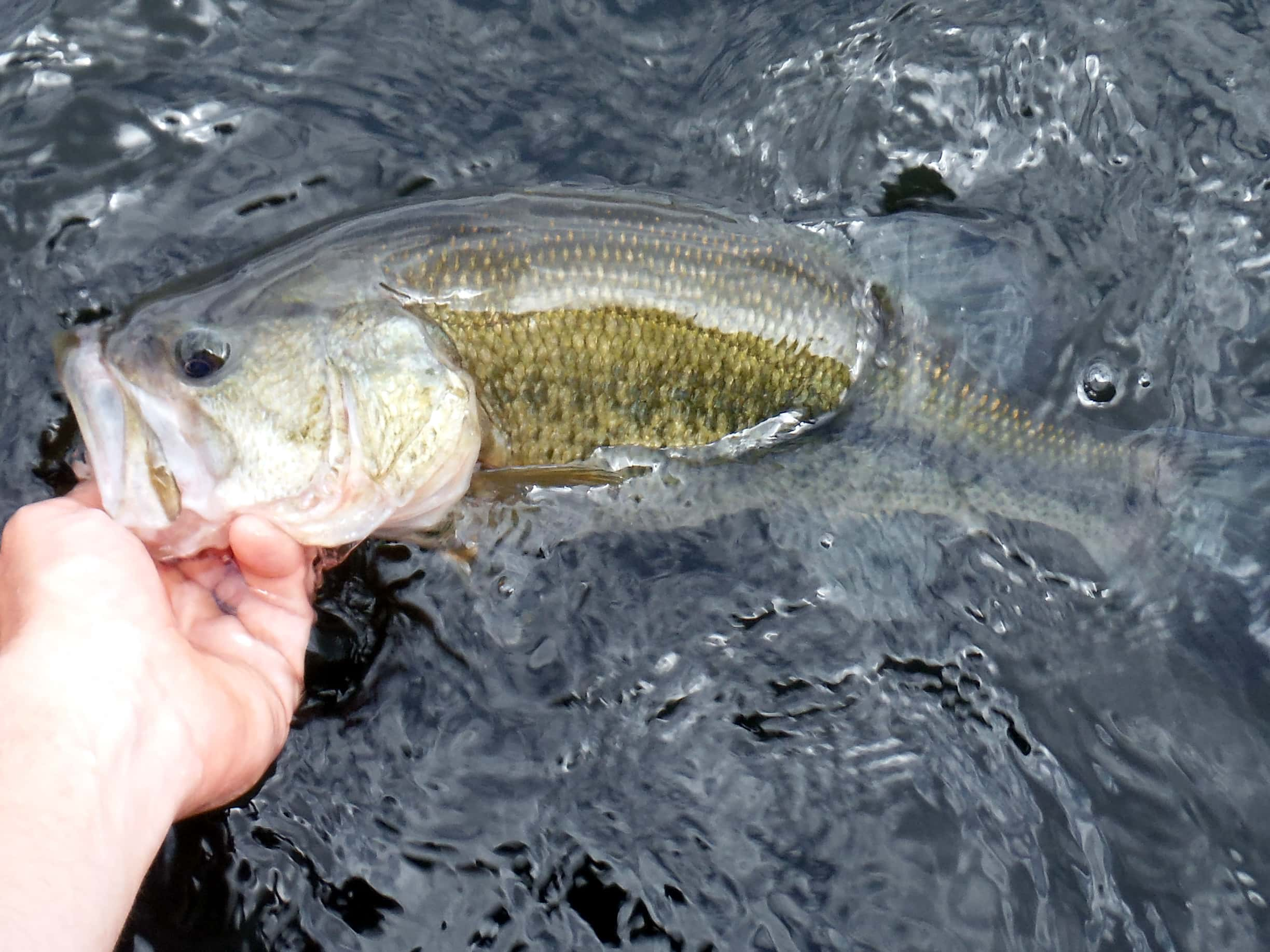
Largemouth bass can be found tucked into weeds and inside bends and pockets in a large stand of vegetation. Exploring the area thoroughly can help increase midsummer action. Simonson Photo.
By Nick Simonson
While midsummer brings its share of weeds to front lawns and gardens requiring some time on the hands and knees cleaning things up, or at least a quick buzz of the tiller in a skillful weaving around those tomato plants, there’s other weed work that can be much more enjoyable.
This time of the season also brings well-established weedlines into play for fish that utilize them for protection from the stronger and longer-lasting rays of the sun and find the bountiful food web that is developing along with the underwater foliage. Anglers are wise to explore these areas to increase their summer success, and target the various edges created by summer weeds to get the most out of their efforts.
An Aside
The most obvious edge created by an established summer weedline is the deepwater edge. Where the green wall ends and open water begins is where many fish seek out their prey. Minnows, aquatic insects and other food items congregate along this edge where predators of all sizes can most easily patrol. Thus, the outer edge is often the best place to start the exploration of a weedline and can be done with relative ease through the use of offerings both fast and slow.
Spinnerbaits and crankbaits can be ripped along the open water immediately adjacent to the weedline to cover water and trigger reaction strikes of those fish positioned along the structure. Bends and turns in the edge can be explored with jigs, plastics and other precision baits that can be worked slowly in these pockets which often hold fish. Think of the weeds as an edge which schooling fish like white bass and crappies can pin schools of minnows up against.
Pocketed
While the expanse of a weedline or a heavily vegetated area may seem uniform, there are often pockets and openings created by varied lake bottoms that don’t facilitate growth in certain areas, or structures such as rocks and boulders prohibit weed growth. As a result, these are prime areas for anglers to target for those fishing lying in wait for an easy meal.
Dropping a Texas-rigged tube into those openings for bass is a classic summer tactic, while working a baited jig in these spaces can pay off on walleye lakes where the wary fish lurks in the shadows cast by the vegetation. Certainly, panfish like bluegills and perch use these openings as well, and a simple jig-and-crawler offering will connect anglers with fast fun when such a space is identified.
Over the Top
Places where weeds mat up on the surface can make angling difficult, but where they allow for some space to retrieve a lure over their tops – whether it’s just a shorter stand of sand grass in the shallows, or thicker cabbage in the depths – anglers can burn a bait over the top of them to trigger a reaction strike. As the stand of weeds tapers and angles out toward the depths, the retrieve rate can be slowed and the lure worked a bit deeper to find fish in the decreasing cover. Many predator species like pike and bass, and even walleyes will dart up from their resting spots and smash an offering moving quickly over their position.
Back Edge
Many anglers overlook the shallow stretch located behind a well established stand of summer weeds, but especially in low light conditions, it’s worth a look. In areas with shoreline rip-rap leading down to the weedline through the shallows, it’s common to find summer smallmouth bass snapping up crayfish and small minnows. Work tubes, jigs and weedless plastic options for bronzebacks. Additionally, these shallows are often home to big bluegills, and exploring the inside edge often results in continuous action and a chance at some real bulls lurking along it.
Variety
Weed types can vary from lake to lake, and even across different sections of a single water body. Each variety provides unique cover for fish and fishing options for anglers. Make it a point to identify those different stands of vegetation on the lakes and those places where the right cover, food web and travel lanes come together for fish through the establishment of solid summer stands of weeds, and explore them with a variety of lure and bait options for the best success, noting that composition can change from season-to-season based on water conditions such as clarity and temperature.
Make a note in a fishing journal, and drop a marker on a GPS of those places where it all comes together for great fishing, with a little bit of weed work in the heart of summer.
